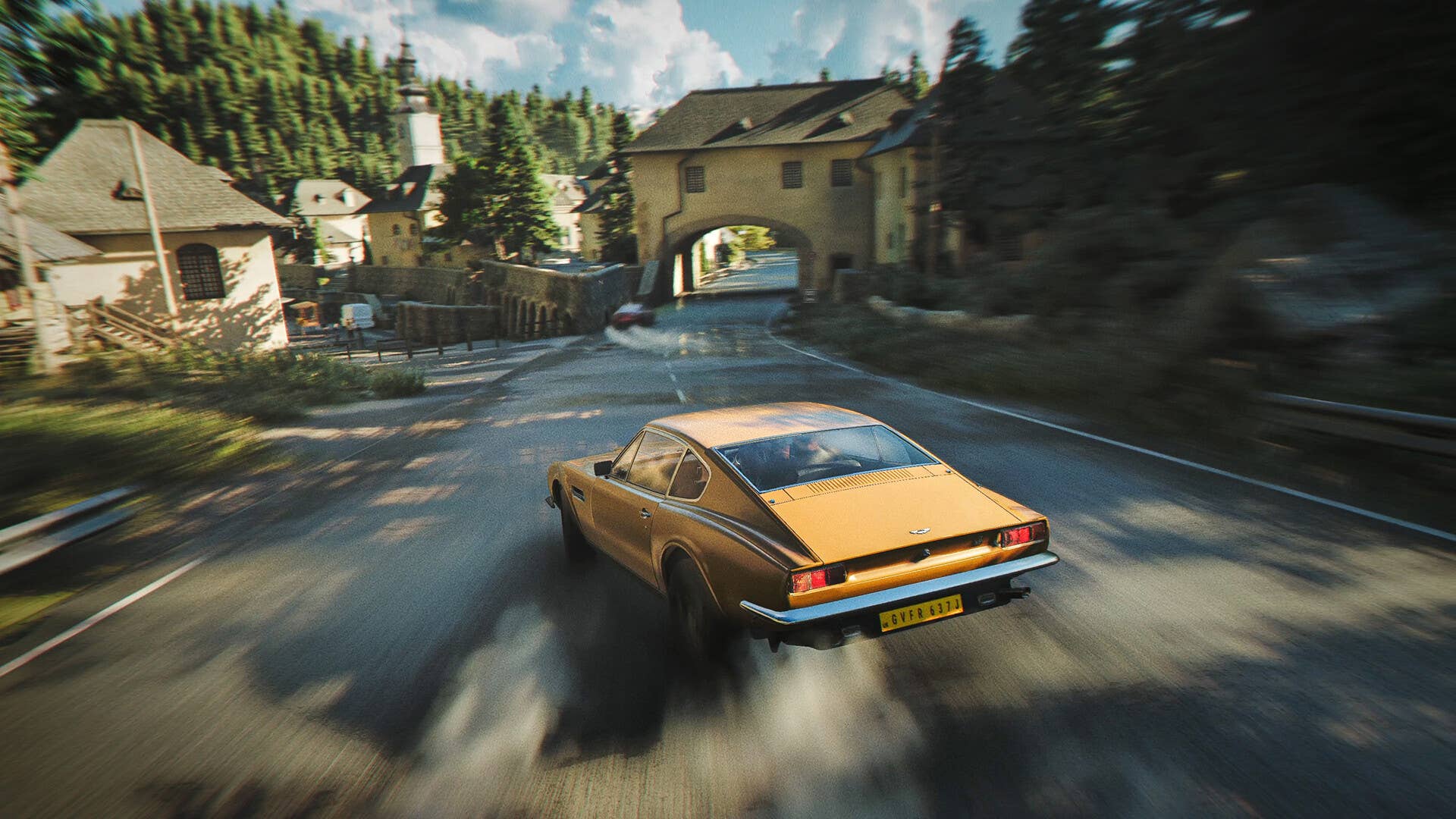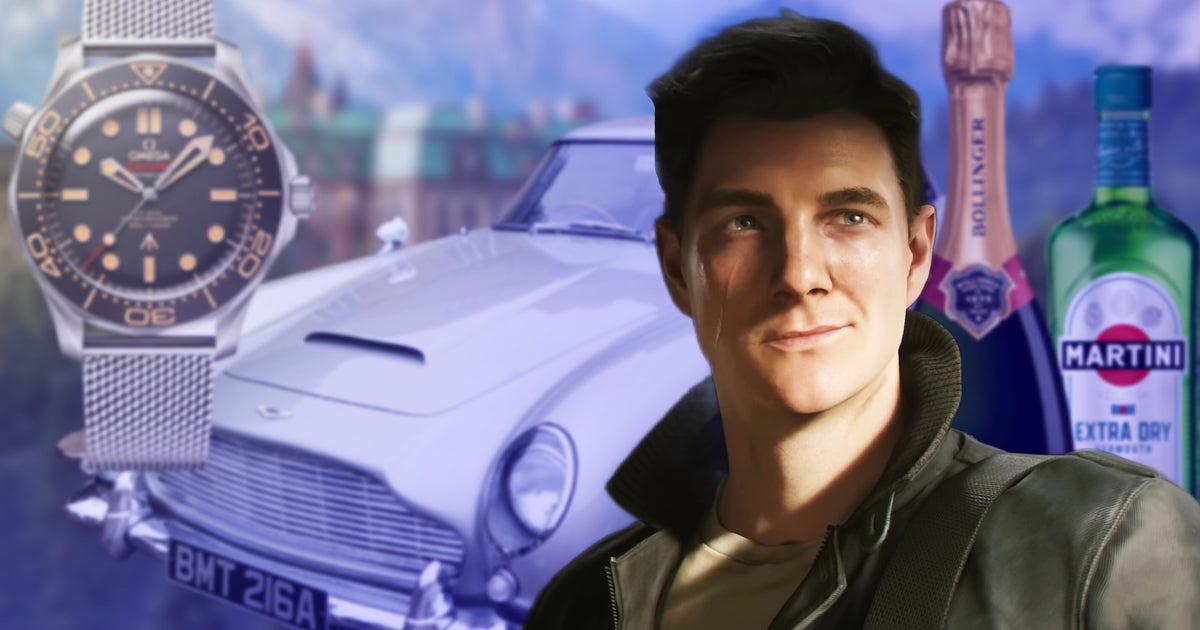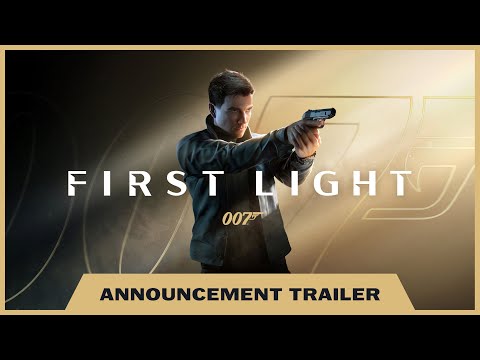When you think of James Bond, you probably think of product placement. You might not realize it, but this is an iron-clad fact: the world’s most beloved spy is always associated with a product. You might think of the Walther PPK, a compact German pistol whose distinct profile is evoked in the ‘007’ logo. You might think of Omega, or Rolex. Aston Martin, of course. Bond is a consumerist. He is what he uses.
If you’re of a modern disposition, you could be forgiven for thinking that all of this was about money. When I think of product placement in Bond, I think of the absolute shameless nadir of Die Another Day. A dishevelled, bearded Bond strolls into a hotel half naked, having escaped years of interrogation. Of course they know him; he gets his regular suite. Smash cut to an ice-chilled bottle of Bollinger, an expensive Phillishave shaver (“Bond’s shaver of choice“), and several Brioni shirts. The shot is egregious; almost distasteful. Money surely did change hands. But also it’s right.
A Novel Concept
“I take a ridiculous pleasure in what I eat and drink. It comes partly from being a bachelor, but mostly from a habit of taking a lot of trouble over details.”
– James Bond, Casino Royale (1953), Chapter 7
This is Ian Fleming’s Bond. When Fleming sat down to write the adventures of the MI5 agent, it’s doubtless the character inherited some of his master’s predilections. Fleming was a man who loved stuff. When in the first novel Bond espouses a love for the finer things in life, it is the voice of Fleming shining through. There was no money changing hands here: this was a man who loved products and finery, putting that down into prose because he wanted to.
Fans of the cinematic adventures have now largely forgotten, or never known, that Bond initially drives a Bentley. Fleming himself did, too. But then the author developed a fondness for Aston Martin in real life, and so the Bentley is destroyed in a chase – and replaced with an Aston. Bond smokes Morland cigarettes; so does Fleming.
The infamous ‘Dry Martini, shaken, not stirred’ is not so simple in the books: there’s a clipped list of instructions given. Specifically required is Gordons – no other Gin – and Kina Lillet, a no-longer-made aromatised wine. It’s made so not because those companies paid for it – but because Fleming himself appreciated these products and felt their named use painted a picture of who Bond is.
This feverish devotion to the stuff in Bond’s life passed to the fans. The earliest Bond megafan of note was one Geoffrey Boothroyd, who in 1956 wrote to Fleming on the spy’s weapon of choice. Just three years into the character’s life, fans were already paying huge attention to the products he used.

“I like most of the things about him, with the exception of his rather deplorable taste in firearms,” wrote Boothroyd. “In particular, I dislike a man who comes into contact with all sorts of formidable people using a .25 Beretta. This sort of gun is really a lady’s gun, and not a really nice lady at that. If Mr. Bond has to use a light gun he would be better off with a .22 rim fire; the lead bullet would cause more shocking effect than the jacketed type of the .25.”
Fleming thanked Boothroyd for his contribution, and the two actually became friends. In the next novel, Bond’s Beretta nearly gets him killed, snagging on the inside of his holster mid-draw. In the novel after that, a character called Major Boothroyd – AKA ‘Q’ – shows up to deliver Bond his signature weapon – smaller, sleeker, and less-likely-to-snag – the Walther PPK. It remains the only firearm to be used by every single on-screen Bond.
Bond insisted on ordering Leiter’s Haig-and-Haig “on the rocks” and then he looked carefully at the barman. “A Dry Martini”, he said. “One. In a deep champagne goblet.” “Oui, monsieur.” “Just a moment. Three measures of Gordons, one of vodka, half a measure of Kina Lillet. Shake it very well until it’s ice-cold, then add a large thin slice of lemon peel. Got it?” “Certainly, monsieur.” The barman seemed pleased with the idea.
– Casino Royale (1953), Chapter 5
In placing real-world brands rather than imagined ones into his narratives, Fleming was something of a pioneer. His writing can probably be best described as economical, something that likely comes from his years of work and training as a journalist, fitting into tight word counts. There’s none of the flowing, descriptive prose of the likes of Tolkien here, and Fleming has no pretentious about being that sort of writer. But the product placement becomes a shortcut. Rather than a lengthy description of the sting of champagne on the tongue, it is simply named: it is Tattinger. Try it yourself if you want to know. Bond’s penchant for excess is also demonstrated, for readers know from name alone that he is enjoying an expensive product. A few years later, in the next novel, Bond is describing his taste for Tattinger as a ‘fad’, and has moved on to Dom Pérignon. Better try that one, too.
Later, Fleming would decry some of this. He’d call it “an unfortunate trademark,” and “gimmickery”. He even switched cigarette brands in real life, presumably to escape the cliche of using all the same stuff as his morally dubious creation. But the damage was done: Bond and products were inextricably intertwined.
In their devotion to being faithful to the books, film producers Harry Saltzman and Albert R. Broccoli transferred that love of products over – even when it was expensive. They had to pay for the Aston Martin DB5s featured in Goldfinger, since the auto company wasn’t interested in working with them. Even though they turned the film down, that decision changed Aston Martin forever. The die was cast. Sixty years on, we live in a world where placement in a Bond film is a hugely lucrative enterprise for business because entire websites exist simply to track the stuff used in the series so you, too, can buy them. When Bond ill-advisedly ditched Aston for BMW, the British carmaker that’d once scorned the films had to beg to be taken back.
Same Thing, But Different
This is all well and good, I hear you cry. But what on earth does this have to do with the game? Well, IO Interactive has clearly understood this element of Bond’s character – and gone for it. Swung for the fences.
The detail that many Bond novel fans immediately picked up on is the scar. This is something no moving picture Bond has ever had before, but it’s a key detail from the novels – the distinctive mark down the character’s cheek, prominent on the new Bond.
It was a dark, clean-cut face, with a three-inch scar showing whitely down the sunburned skin of the right cheek. The eyes were wide and level under straight, rather long black brows. The hair was black, parted on the left, and carelessly brushed so that a thick black comma fell down over the right eyebrow. The longish straight nose ran down to a short upper lip below which was a wide and finely drawn but cruel mouth. The line of the jaw was straight and firm.
– From Russia With Love (1957), Chapter 6
But for me, honestly, it was the stuff that caught my eye. The second the trailer went out I was posting on BlueSky like a madman. I was frame-by-framing the trailer, looking at the models of watches, of guns, or vehicles. I wanted to know how deep they were going. Very, it turns out.

At Summer Games Fest, IO Interactive boss Hakan Abrak stood in front of a presentation slide that listed partners secured for the 007: First Light. Aston Martin, of course. Jaguar, Land Rover, Omega, Coca Cola, Leica Cameras, British clothing brand Orlebar Brown… This is a Bondian list. It will have taken immense time to negotiate – but IO clearly saw it as key.
It would’ve been very easy indeed to just drop in facsimiles or lookalikes, especially for the smaller items. You probably have to get an Aston Martin, as that’s a ‘hero’ item, something you’ll directly control – but it would’ve been most easy to slap an Omega lookalike on Bond’s wrist and save that trouble. But IO’s commitment is clear.
There’s an even more canny decision going on: this Bond is not just playing the hits. This is the decision that most surprised and pleased me upon seeing First Light’s initial trailer, in truth: this is an original Bond.
We know that, of course. First Light’s Bond looks and sounds like no Bond we have seen before. But this is also reflected in the products. Again, the easy choice would’ve been to drop a blue Omega Seamaster 300, as worn by Brosnan and Craig, onto the digital Bond’s wrist. But instead IO has clearly worked with Omega and decided to give the new man a signature of his own. IO’s Bond wears a Seamaster too, but it’s a Chronometer model – which no Bond has worn before.
Giving a different variant of the same watch is a small but perceptible difference – and I think it shows an intriguing depth of thought about this Bond’s kit. The difference is so small it could easily not exist – but it does. Curiously, it’s also not an exact match for any model Omega currently produces – which raises suspicions that the horologist will release the exact model he wears for real in the future.
As for the car, that too is different – rather than a new Aston or the iconic DB5, we see IO’s Bond driving a 1970s Aston Martin DBS. It’s a curious choice, especially in that mustard color – although it’s also a bloody cute deep-cut reference, as it’s a car driven by Roger Moore in a lesser-known TV role he held before being cast as Bond. Neat!

In this you can see IO’s dedication to the idea of Bond, the mood of it. The game begins to relish in the same consumerist fantasy as Fleming’s novels and all the films that followed. In offering up a Bond who has his own tastes that aren’t just a carbon copy of the filmic Bonds that came before, they also further develop this new version of the character and Bond’s world. We know on the development of the films, endless meetings are held about these product-related matters. Each choice is carefully weighed. It’s thrilling to see similar thoughts applied for a game.
A short trailer and a few vague dancing-around-the-details interviews with developers aren’t really enough to tell us much about this game. But the vibe the trailer presents is immaculate – there is the overwhelming feeling that they get this character, not just as a popular film staple – but as a literary legend going back to the fifties. All of that history appears to be respected, and modernized.
And like I say, it’s not just shameless product placement. It’s part of the texture of Bond. It’s part of what makes Bond this strange character that he is – cruel, cold, and unacceptable. But also heroic and aspirational. People want to wear those clothes, that watch, or drive that car. I wear Omega watches myself; I can trace those purchases back to a wide-eyed kid watching a laser come out of the crown of a Seamaster to cut an escape route from a Russian armored train. In the modern age, where video games are sometimes more cinematic than cinema itself, it was vital that a new gaming Bond channelled that energy. I’m thrilled that IO appears to be on the right track.

